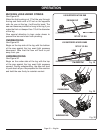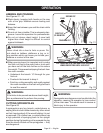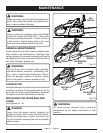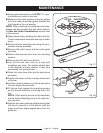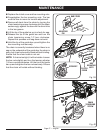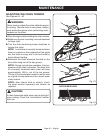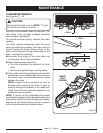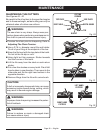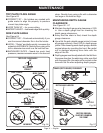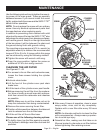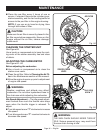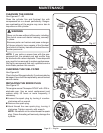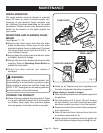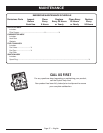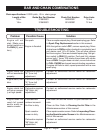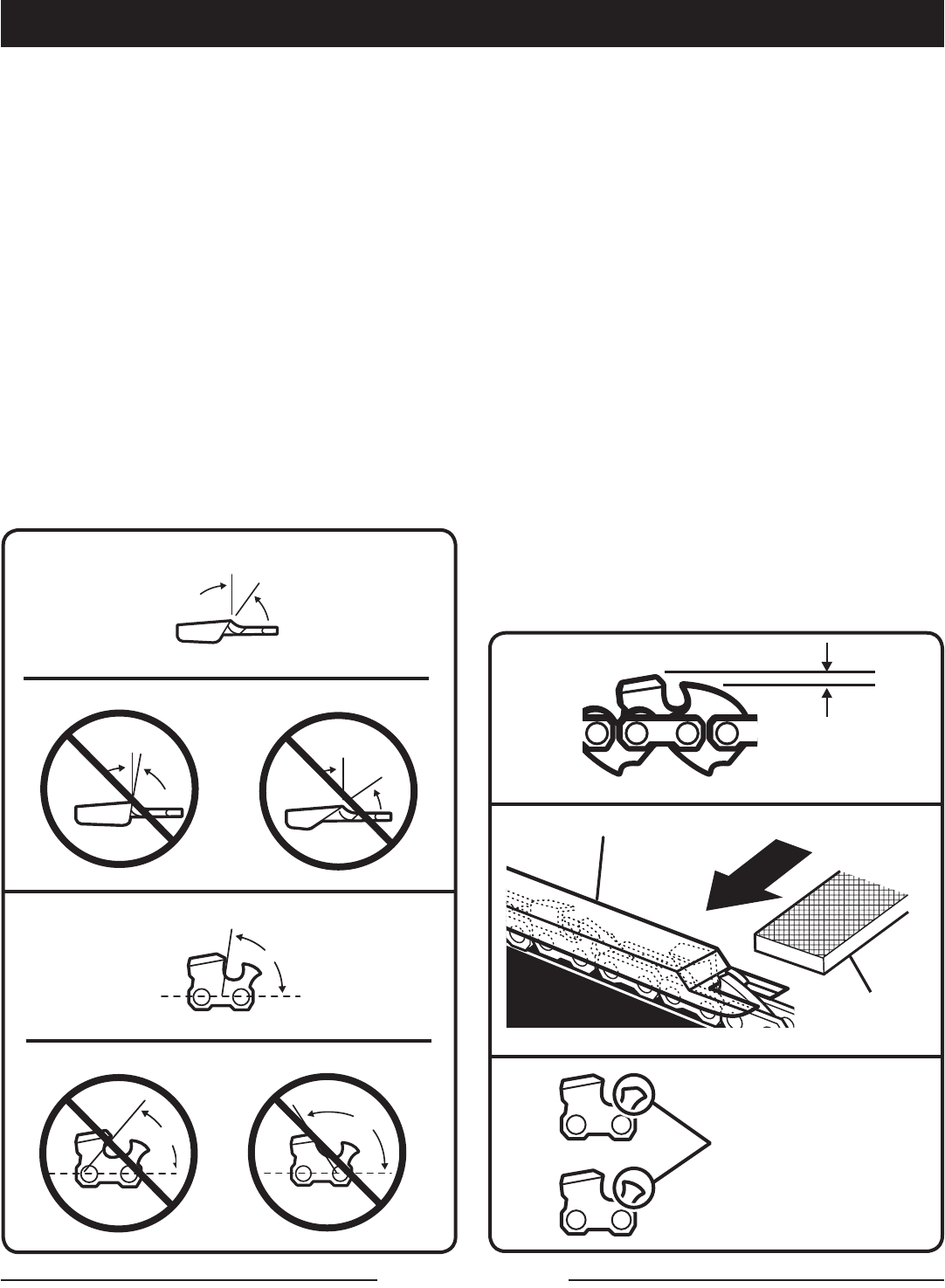
Page 31 — English
TOP PLATE FILING ANGLE
See Figure 53.
CORRECT30°–fileholdersaremarkedwith
guide marks to align file properly to produce
correct top plate angle.
LESSTHAN30°–forcrosscutting.
MORETHAN30°–featherededgedullsquickly.
SIDE PLATE ANGLE
See Figure 54.
CORRECT80°–Producedautomaticallyifyou
use the correct diameter file in the file holder.
HOOK–“Grabs”anddullsquickly;increasesthe
potentialofKICKBACK.Resultsfromusingafile
with a diameter too small or a file held too low.
BACKWARDSLOPE–Needstoomuchfeed
pressure; causes excessive wear to the bar and
INCORRECT
MORE THAN 30°
TOP PLATE FILING ANGLE
LESS THAN 30°
Fig. 53
30°
CORRECT
INCORRECT
BACKWARD SLOPE
SIDE PLATE FILING ANGLE
Fig. 54
80°
CORRECT
HOOK
FLAT FILE
DEPTH GAUGE JOINTER
Fig. 56
RESTORE ORIGINAL
SHAPE BY ROUNDING
THE FRONT
Fig. 57
Fig. 55
RAKER (DEPTH GAUGE) CLEARANCE
.025 in.
MAINTENANCE
chain. Results from using a file with a diameter
too large or file held too high.
MAINTAINING DEPTH GAUGE
CLEARANCE
See Figure 55 - 57.
Maintain the depth gauge at a clearance of .025
in. Use a depth gauge tool for checking the
depth gauge clearances.
Every time the chain is filed, check the depth
gauge clearance.
Use a flat file and a depth gauge jointer to lower
all gauges uniformly. Use a .025 in. depth gauge
jointer. After lowering each depth gauge, restore
original shape by rounding the front. Be careful
not to damage adjoining drive links with the
edge of the file.
Depth gauges must be adjusted with the flat file in
the same direction the adjoining cutter was filed
with the round file. Use care not to contact cutter
face with flat file when adjusting depth gauges.



